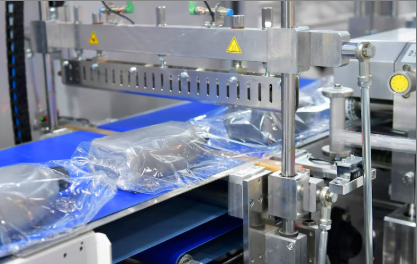Industrial machinery is the backbone of modern manufacturing, packaging, and production processes. Understanding the parts of machines and their specific functions is essential for maintaining operational efficiency, preventing downtime, and ensuring workplace safety. Each component plays a critical role, and even minor issues in one part can disrupt the entire system. By learning about the different machine components and how they interact, operators and maintenance teams can optimize performance and extend equipment lifespan.
Why Knowing Machine Parts Matters
Knowing the parts of machines is more than a technical exercise. It helps businesses:
- Enhance Equipment Longevity – Regularly monitoring and maintaining key components ensures that machinery operates efficiently for years.
- Reduce Downtime – Early detection of worn or faulty parts prevents unexpected breakdowns that can halt production.
- Improve Safety – Understanding how components work together helps prevent accidents caused by equipment failure.
- Optimize Performance – Properly maintained parts ensure machines run smoothly, maintaining consistent output quality.
Key Parts of Machines and Their Functions
Industrial machines consist of numerous components, each with a specific role. While the exact parts may vary depending on the machine type, several key elements are common across most systems:
1. Belts and Pulleys
Belts, such as the Eagle Belt 0.50, transmit power between rotating shafts. Pulleys work in tandem with belts to drive various components within the machine. They are essential for transferring motion efficiently while maintaining synchronization between parts. Belts must be durable and properly tensioned to prevent slippage and wear.
2. Bearings
Bearings support rotational components and reduce friction between moving parts. They are crucial for smooth operation, preventing overheating and extending the lifespan of motors and shafts. Regular lubrication and inspection of bearings are essential to avoid sudden failures.
3. Gears
Gears transfer motion and torque between machine components. They allow for speed adjustments, direction changes, and torque amplification. Proper alignment and maintenance of gears are critical, as worn or misaligned gears can cause vibration, noise, and performance loss.
4. Motors
Electric or hydraulic motors provide the energy required to drive machines. They convert electrical or fluid power into mechanical motion, enabling machines to perform tasks efficiently. Ensuring motors are correctly sized for the load and properly maintained is essential for consistent performance.
5. Shafts
Shafts connect different components, transmitting power and motion across the machine. Proper alignment and support of shafts are necessary to prevent wobbling, excessive wear, and premature failure of connected parts.
6. Fasteners
Bolts, screws, and nuts may seem minor, but they are essential for keeping components securely attached. Regularly checking fasteners prevents loosening that could lead to mechanical failure or safety hazards.
7. Control Systems
Modern machinery often incorporates control panels, sensors, and programmable logic controllers (PLCs) to regulate operations. These systems monitor machine performance, detect errors, and ensure consistent operation. Maintaining control systems, including calibration and software updates, is vital for optimal machine functionality.
8. Frames and Supports
The structural components of a machine provide stability and alignment for moving parts. A solid frame reduces vibration, ensures precision, and supports the weight of various components. Routine inspection of frames for cracks or wear helps maintain machine integrity.
How Quality Parts Impact Machine Efficiency
Using high-quality components, such as Eagle Belt 0.50 or reliable bearings and gears, directly impacts machine efficiency. Premium parts withstand stress, reduce wear, and minimize unexpected downtime. Low-quality or incompatible components can cause misalignment, vibration, and faster degradation, leading to costly repairs and production delays.
Regularly replacing worn components with trusted parts from reputable suppliers ensures that machines continue to perform at peak efficiency. It also simplifies maintenance schedules, reduces labor costs, and prolongs the service life of equipment.
Tips for Maintaining Machine Parts
Proper maintenance of machine components is key to operational longevity. Here are some practical tips:
- Regular Inspections – Check belts, gears, and bearings for wear, cracks, or misalignment.
- Lubrication – Keep bearings, gears, and shafts properly lubricated to minimize friction.
- Alignment Checks – Ensure belts, pulleys, and shafts are aligned to prevent uneven wear.
- Cleaning – Remove dust, debris, and residues that could affect moving parts.
- Scheduled Replacements – Replace high-stress components proactively to prevent unexpected breakdowns.
- Training – Educate staff on identifying signs of wear and proper handling of machine components.
Conclusion
Understanding the parts of machines and their functions is essential for any industrial operation. Each component, from belts like the Eagle Belt 0.50 to bearings, gears, and control systems, plays a vital role in maintaining machine efficiency, safety, and longevity. By investing in high-quality parts and implementing regular maintenance practices, businesses can reduce downtime, enhance performance, and ensure a safer working environment.




